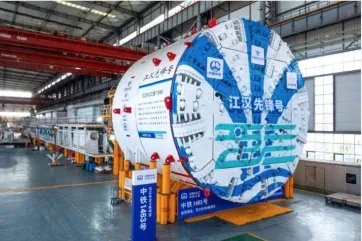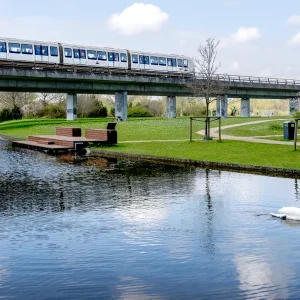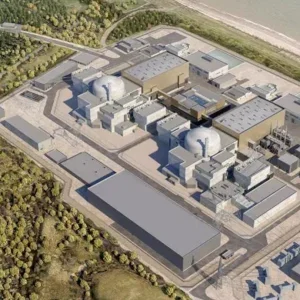
China Railway Engineering Equipment Group, (CREG), has designed and manufactured three hard rock TBMs for the Yangtze-to-Hanjiang River Water Diversion Project.
With the total tunnelling length of 123km, the project will use 10 hard rock TBMs and in the next few months CREG will supply another three TBMs for the project.
The project is characterised with deep overburden, long mileage and a large tunnel diameter. Challenges along the alignment will include strong rockburst, mud and water intrusion, large faults, soft rock deformation, high temperatures and potentially harmful gases.
The single shield TBM, CREC 1463, was the first hard rock machine for the project. This 12.23m diameter TBM is about 160m long and has the advantages of probe drilling and intelligent tunnelling. The machine is equipped with technologies, such as a comprehensive geological prediction system and cutter condition monitoring system.
The double shield TBM, CREC 1468, was the second machine to roll off the production line. This 11.93m diameter TBM is about 180m long and is equipped with the self-developed TBM SMART system in addition to a TBM jamming warning system and cutter condition monitoring system. This SMART system can automatically evaluate geological conditions and machine health, and set the best tunnelling parameters for safety and efficiency.
A second single shield TBM, CREC 1466, has a diameter of 12.23m and total length of 227m. It can adapt to the minimum curve radius of 800m and the maximum gradient of 10%. Potential construction risks are greatly minimised by adopting a double-speed reducer, shield structure resistance reduction design and TBM jamming warning and evaluation system.
The Yangtze-to-Hanjiang River Water Diversion Project is a follow-up water source project of the South-to-North Water Diversion Middle Route Project, which diverts water from the Three Gorges Reservoir to the Danjiangkou Reservoir. It will link the South-to-North Water Diversion Project and the Three Gorges project closely, and connect the Yangtze River Basin, the Hanjiang River Basin and North China’s Beijing and Tianjin to form a new water network.







